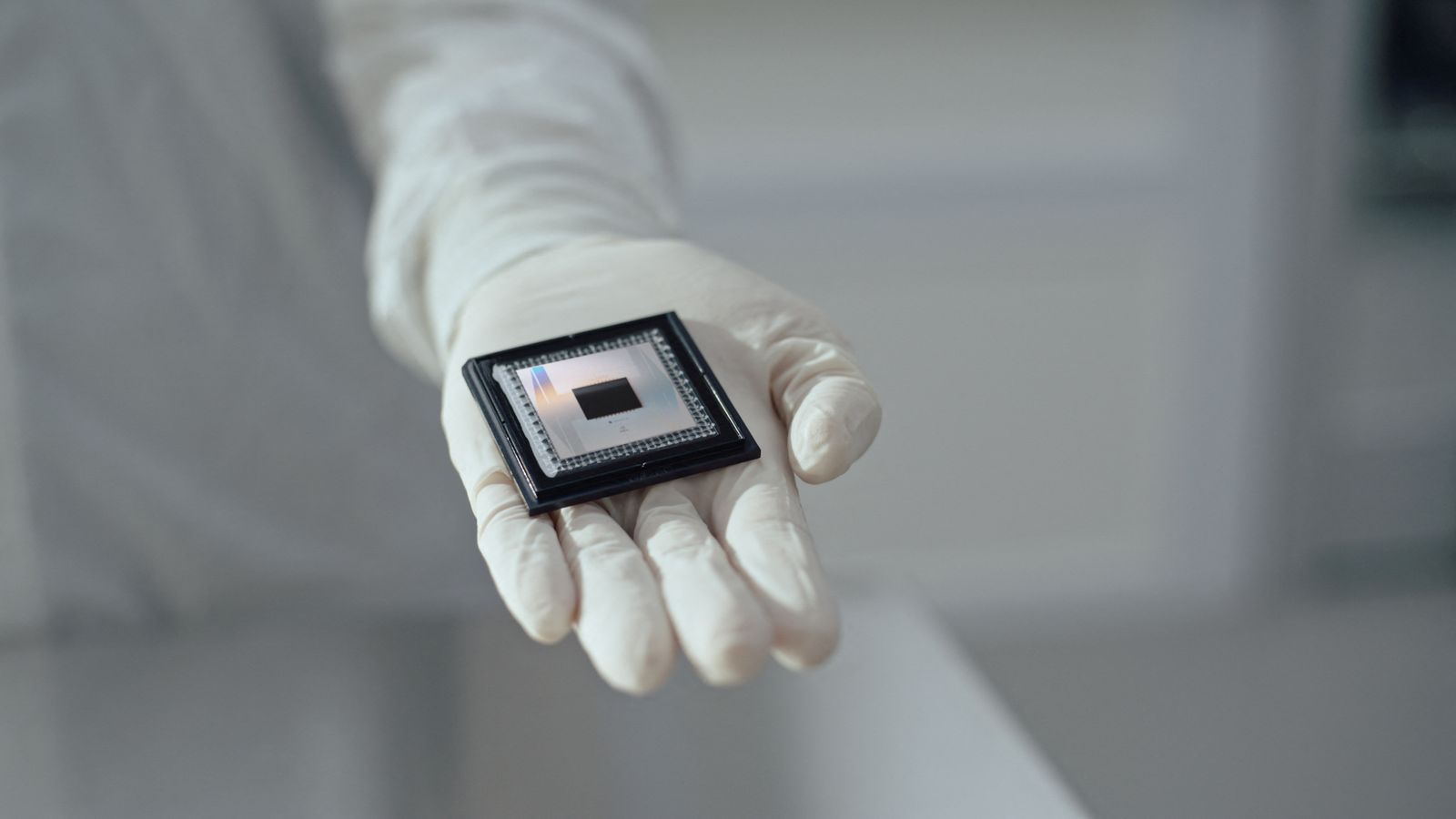The field of quantum computing has taken a giant leap forward with the development of the Willow chip. Over a decade in the making, this achievement stems from a vision to harness the fundamental principles of quantum mechanics for scientific discovery, problem-solving, and transformative applications. The Willow chip represents a major step toward realizing large-scale, commercially useful quantum computers.
A critical hurdle in quantum computing has been error correction. Qubits, the foundational units of quantum computation, are notoriously fragile and prone to interacting with their environment, leading to errors. These errors increase with the number of qubits, often rendering the system ineffective.
The Willow chip addresses this challenge with groundbreaking advancements in quantum error correction, achieving what experts call “exponential quantum error correction” or operating “below threshold.” This means that as the number of qubits in the system increases, the error rate decreases exponentially.
Published in Nature, recent findings show that Willow can scale from a grid of 3×3 encoded qubits to larger arrays, including a 7×7 grid, while halving error rates with each expansion. This milestone marks a historic achievement first envisioned by Peter Shor in 1995.

Real-time error correction is now possible on a superconducting quantum system, demonstrating that qubits in an error-corrected array outlive individual physical qubits. These advances establish Willow as the most compelling prototype for a scalable logical qubit system to date.
The implications of these breakthroughs extend beyond error correction. Willow’s capabilities bring the dream of running practical, commercially relevant algorithms closer to reality. These are computations that cannot be replicated on classical systems, opening new frontiers for science and industry.
To measure Willow’s performance, researchers utilized the random circuit sampling (RCS) benchmark, a standard test of quantum systems. Pioneered by the Google Quantum AI team, RCS assesses whether a quantum computer can perform tasks impossible for classical systems.
Willow’s results on this benchmark are astounding: it completed a computation in under five minutes that would take one of today’s fastest supercomputers 10 septillion years—a span so vast it dwarfs the age of the universe. This makes Willow 1,050,000,000,000,000,000,000,000,000,000 times (1 nonillion times) or 1.05 million septillion times faster than today’s fastest supercomputers.
Related Stories
This achievement suggests that quantum computation may involve parallel processes across multiple dimensions, echoing the multiverse concept proposed by physicist David Deutsch.
These results also highlight the exponential rate at which quantum processors are outpacing classical systems. While classical computing continues to improve, the gap is widening rapidly, as quantum systems like Willow achieve performance gains that far exceed expectations.
Willow’s fabrication, a marvel of engineering, took place in a state-of-the-art facility designed specifically for quantum chip development. Each component—from gates and qubit resets to readout systems—was meticulously engineered for optimal integration. This holistic approach ensures that all elements function cohesively, maximizing the chip’s overall performance.
Unlike previous quantum systems, Willow emphasizes quality over quantity. It incorporates 105 qubits with best-in-class performance across key benchmarks like quantum error correction and random circuit sampling.

A notable improvement is in the qubits’ coherence times, or how long they can retain an excitation, which has reached nearly 100 microseconds—a fivefold enhancement over earlier designs. This achievement underscores the importance of refining both the quantity and quality of qubits to build effective quantum computers.
Looking ahead, the next milestone for quantum computing is to achieve “useful, beyond-classical” computations relevant to real-world applications. While benchmarks like RCS demonstrate quantum supremacy, they lack direct practical applications.
Conversely, experiments simulating quantum systems have yielded new scientific insights but remain within the capabilities of classical systems. The challenge now is to develop algorithms that transcend classical computing’s limitations while addressing tangible problems.
Quantum computing’s potential spans various domains, including drug discovery, material science, and energy. For example, quantum systems could revolutionize the design of new medicines by simulating molecular interactions at an unprecedented scale.

Similarly, they could lead to breakthroughs in creating more efficient batteries for electric vehicles or accelerating the development of fusion energy technologies.
The Willow generation of chips offers a promising foundation for these advancements. Researchers and developers are encouraged to explore open-source software and educational resources to contribute to this evolving field.
A new course on quantum error correction, available on Coursera, aims to equip the next generation of scientists with the tools to tackle future challenges.
Quantum computing also holds significant implications for artificial intelligence. While both fields are transformative in their own right, quantum computing’s ability to solve complex problems could amplify AI’s potential.
By leveraging quantum algorithms, AI systems could access training data beyond the reach of classical machines, optimize learning architectures, and model phenomena influenced by quantum effects. This synergy could unlock solutions to challenges ranging from efficient resource allocation to climate change mitigation.

The Willow chip is not just a technological milestone; it represents a paradigm shift. By addressing fundamental challenges and achieving unparalleled performance, it paves the way for a future where quantum computing transforms industries and reshapes our understanding of the universe.
Note: Materials provided above by The Brighter Side of News. Content may be edited for style and length.
Like these kind of feel good stories? Get The Brighter Side of News’ newsletter.
The post Google’s new quantum chip is 1.05 million septillion times faster than today’s fastest supercomputers appeared first on The Brighter Side of News.